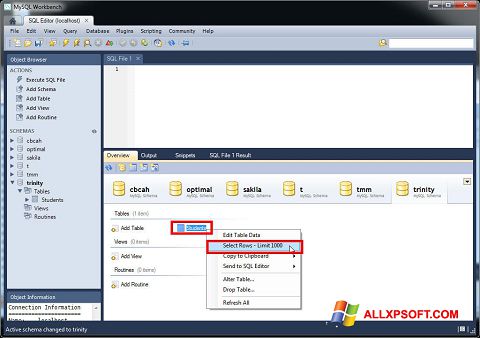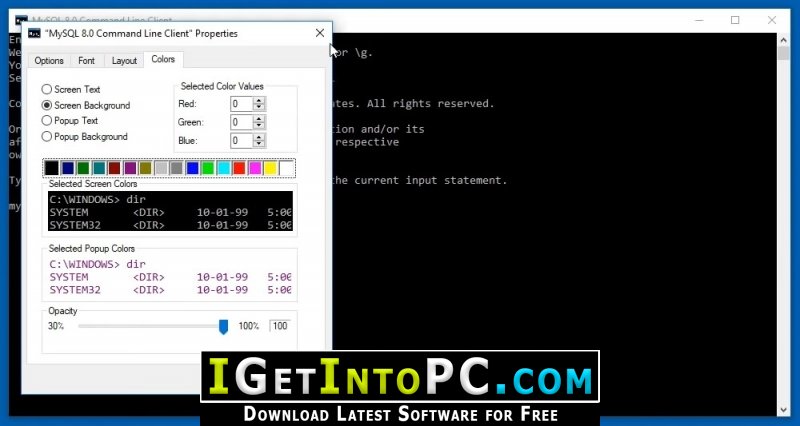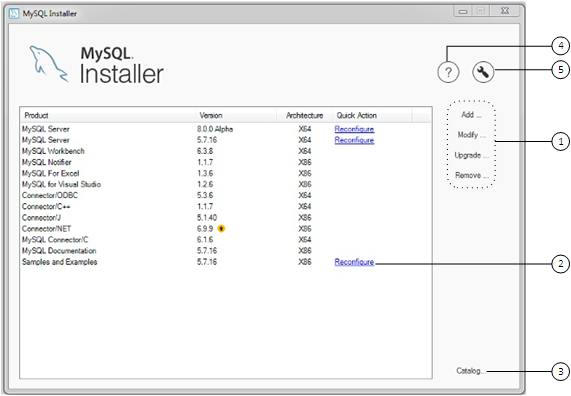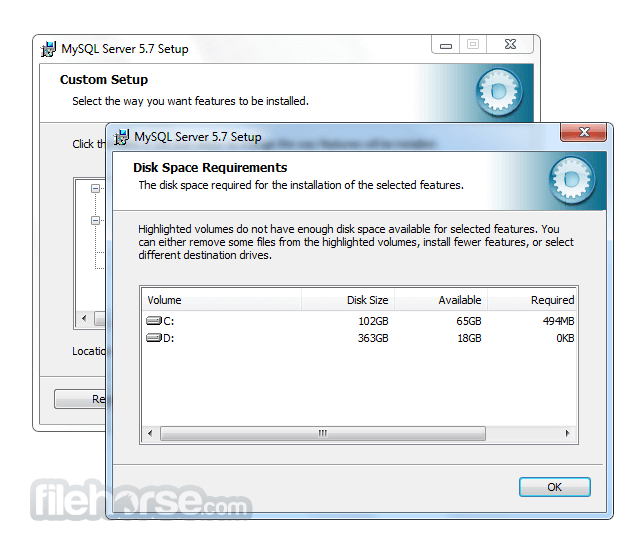
- #Mysql download for 64 bit install#
- #Mysql download for 64 bit password#
- #Mysql download for 64 bit Pc#
- #Mysql download for 64 bit free#
Note Depending on the version of Windows on your computer, MySQL might be inside the Program files (x86) folder.ĭouble-click the MySQL Server 8.0 folder, and finally, double-click the bin folder. Next, double-click your C: drive, as shown in the following image:ĭouble-click the Program files folder, then double-click the MySQL folder.

#Mysql download for 64 bit Pc#
Open any folder on your computer and select This PC in the left-hand navigation bar, as shown in the following image: Add the MySQL PATH to Environmental Variablesįirst you'll need to copy the PATH to MySQL to your clipboard.
#Mysql download for 64 bit install#
Now you'll need to add the PATH to the MySQL install to your environmental variables. Note If you have any issues with the Windows (x86, 32-bit), MSI Installer that is the SMALLER file size, go back and download the LARGER size, following the same steps. On the Apply Configuration screen, click Execute to apply the changes, as shown in the following image:Īfter the configuration is complete, click Finish. On the next screen, Windows Service, don't change anything, and click Next.
#Mysql download for 64 bit password#
Write it down somewhere easily accessible, or add it to a password manager to keep it secure.Īfter entering your password twice and ensuring that you've stored it somewhere you can find it, click Next. Then repeat your root password in the next field, as shown in the following image:Ĭaution Don't forget your password! It's extremely important that you keep track of your root password for MySQL, as it's difficult to reset. Make sure to enter a unique password that you've never used before. On the next screen, Accounts and Roles, you'll need to enter a strong password under Root Account Password, near the top of the screen. Important On the Authentication Method screen, select "Use Legacy Authentication Method (Retain MySQL 5.x Compatibility)" and click Next, as shown in the following image: On the Type and Networking screen, don't change anything, and click Next.

Reopen it and click on the Reconfigure link under Quick Action, as shown in the following image: Then click Finish on the next page, which should indicate Installation Complete, as shown in the following image:Īt this point, the installer should close on its own. Once the installation status shows as Complete, click Next, as shown in the following image: Click Execute to begin the installation, as shown in the following image: The MySQL server is now ready for installation. Click Next, as shown in the following image: Click Execute to start the installation process, as shown in the following image:Īfter you click Execute, the status will be listed as Downloaded. On the next screen, entitled Download, you'll see your product listed (it should say "MySQL Server" followed by a version number). When you reach the page labeled "Choosing a Setup Type", check that "Server only" is selected, and click Next:

If you get prompted for an update, select Yes. Navigate to the folder where the file was downloaded, and double-click it to run the installer.
#Mysql download for 64 bit free#
When prompted about signing up for a free Oracle Web account on the next page, select "No thanks, just start my download," as shown in the following image: This should look like the following image:

On the next page, find the "Windows (x86, 32-bit), MSI Installer" option that is the smaller file size, and click the Download button. Next to "Windows (x86, 32 & 64-bit), MySQL Installer MSI", select "Go to Download Page". In the Select Operating System dropdown menu, choose Microsoft Windows, as shown in the following image: To install the MySQL server on a Windows computer, visit the MySQL Community Downloads page. To install MySQL on your machine, follow the instructions provided for your operating system. Reliable and easily scalable, MySQL powers the back end of many popular social, streaming, and service web applications. MySQL is a developer-friendly open source relational database management system. The Full-Stack Blog Deep MySQL Installation GuideMay 10, 2022


 0 kommentar(er)
0 kommentar(er)
